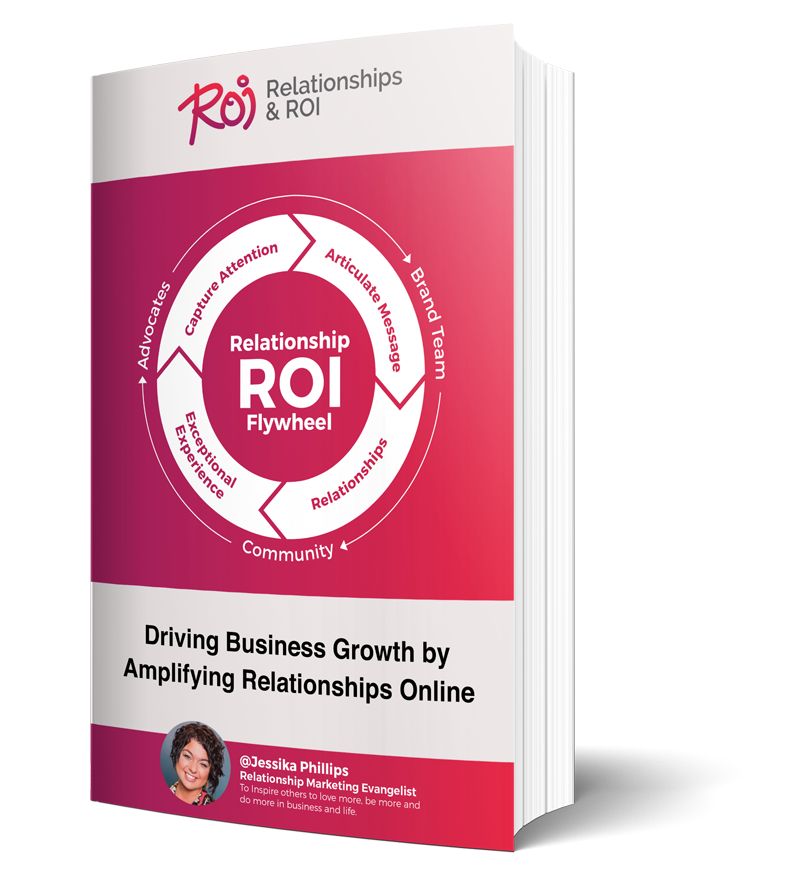Sales doesn’t have to be a bad word. It can be fun, educational, and inspirational. Today we’re going to look at how you can use social media to sell what you’re doing without being like a spammy used car salesman.
To do that, we wanted to talk to an expert in this area.
Rebekah Radice is the founder of Rebekah Radice Media and RadiantLA, premier training and development companies working with growth driven leaders to build comprehensive marketing systems. She is an award-winning blogger and was recognized two years in a row for her contributions to the social media industry.
Radice helps her followers and clients understand how to appropriately sell on social media. She says there is definitely a bad perception around sales. But there doesn’t have to be. Instead, it can be all about helping others.
First things first, start by asking yourself some questions.
Why are you on social media? Where and how are you creating content? What’s the real reason behind your content creation?
Using these questions, you can determine where you are and where you need to be.
Radice has a whole process behind this: PREP.
- Planning—why do you show up, how are you showing up, and what exactly are you trying to do?
- Research—know your market, understand your audience, and get into their heads and hearts.
- Execution—nailing down and setting up your actual strategy and then moving forward and doing it!
- Profit—connect the dots and see ROI from all the energy you have put into your social selling.
These steps are designed to help you get to see ROI in a timely manner. That way you don’t have to keep waiting and waiting to see success in your social selling campaigns. The planning, research, and execution phases are critical to accomplishing that last phase, Radice said.
Looking towards the future, Radice says listening will be what it’s all about.
In the early days of social media, marketers saw an opportunity and hopped on platforms to blast out messages and create ads and use push marketing to further their own agenda.
But things have changed a little bit now.
Push marketing has been left at the wayside. Brands are working towards getting their audiences to know them through social media. They are using social media as it is intended to be. It’s about building relationships, having conversations, and inserting ourselves in the right locations.
To that end, marketers will have to listen to their audience, Radice said. What motivates them, drives them, and inspires them to take action? The second part of that is learning. Learning and then using that knowledge to put out there and being a solution for the audience when they have a problem.
Social Listening
Haven’t heard of social listening before? It’s easy. It’s us, the marketers, monitoring conversations and then tracking what’s being said about your business and brand. For example, if you’re a real estate professional in Los Angeles and you want to monitor what people are saying about buying a home in the LA-area. You can use keywords to listen to what people are saying on social media.
If you’re a realtor, you might follow keywords like “buying a home in LA.”
When you do that, you’re going to see the interactions between the people saying things and their friends and peers. Sometimes between people they don’t even know! As you’re listening and paying attention, that’s what’s going to give you some insight into what people’s real concerns are. What’s keeping them from taking that next step? Now, be the solution to the problem.
When you are actively listening you’re going to hear what your audience actually want from you.
But, wait, social selling isn’t working for me … what do I do?
We hear you. You’ve been pushing out content and still nobody is buying. Maybe there isn’t even anyone clicking through.
Whether you’re brick-on-mortar or you’re solely online, it is a struggle to get people over to your website and into your funnel. Let alone take action.
Radice said a big part of what you should do if what you’re doing isn’t working is to head back to those goals you initially had and look at what it was trying to achieve. What does your sales funnel actually look like?
Look at it from your customer's standpoint. How does it feel to move from step-to-step?
Other questions to consider:
Are your calls-to-actions aligned to your brand? What is the messaging and is it right for your audience? Where are you placing the message? How do they translate into a purchase opportunity? Have you even clearly defined how they’re hiring you?
Nine out of 10 times, you have a leaky funnel.
You have places where you are losing people at a very significant rate. “Once you get into the data and look into it, you figure it out pretty quickly,” Radice said.
If you’re having problems, you’re likely sending out the wrong message, for the wrong people, at the wrong point within that journey.
To do a little research on this, Radice recommends going to Facebook Audience Insights, Google, Buzzsumo, SEM Rush, and other tools that will help you see what kinds of content and media your audience is already interacting with and desiring.
Are you using an inbound funnel and social media to sell your product or services? Let us know some of the challenges you’ve faced and how you’ve found a solution. If you haven’t found a fix, what are you struggling with? We’d like to help you out and cover that as a topic.
Until next time, happy social selling!




Comments